Safe and Humane Cat Trapping: A Step-by-Step Guide
Trap-Neuter-Return (TNR) is a widely accepted, humane method for managing community cat populations. However, trapping feral or stray cats must be done with care, compassion, and proper preparation to ensure both the safety of the cats and the people involved.
Whether you're a first-time trapper or a volunteer with a rescue group, this guide will walk you through each step of the process for safely and humanely trapping cats for TNR. From planning and equipment to post-surgery release, this article provides a complete overview for a successful cat-trapping operation.
Why Humane Trapping Matters
Humane trapping is the cornerstone of any effective TNR program. By safely capturing outdoor cats and ensuring they are spayed, neutered, and vaccinated, we can:
Prevent overpopulation
Reduce nuisance behaviors like yowling and fighting
Improve the health and safety of the cat colony
Protect native wildlife and ecosystems
Improper trapping can lead to injury, trauma, or mistrust in a colony. That’s why understanding the right techniques is essential.
What You’ll Need
Before setting out to trap, gather the following equipment:
Essential Supplies:
Humane box trap (like a Tru-Catch or Havahart trap)
Trap covers (towels or blankets to calm the cats)
Bait (tuna, sardines, or mackerel work well)
Newspapers or absorbent pads (to line the trap)
Carrier or holding cage (for post-trap transfer if needed)
Gloves and protective clothing
Identification tags (if trapping multiple cats)
TNR forms or medical records (for vet coordination)
Optional but helpful:
Trap divider for safe handling
Zip ties or clips for added trap security
Flashlight or headlamp (for early morning or night trapping)
Step-by-Step Guide to Safe and Humane Cat Trapping
Step 1: Plan Ahead
Start by identifying the cats in the area. Is it a single stray or an entire colony? How many cats are you targeting? Contact a local TNR-friendly veterinarian or clinic in advance to schedule appointments.
Important Tips:
Don’t trap without having a surgery appointment booked.
Know your drop-off and pick-up times.
Notify neighbors so they don’t interfere with your plans.


Step 2: Withhold Food
The night before trapping, stop feeding the cats. This makes them more likely to enter the trap for food. Never withhold water, especially in warm weather.
Tip: Post a sign near the colony letting others know not to feed them temporarily.
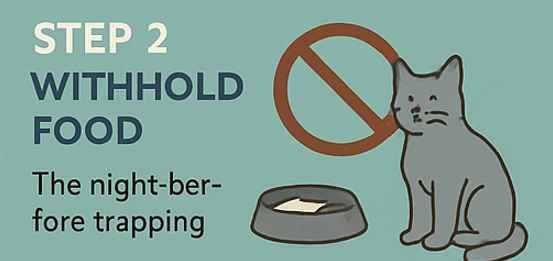

Step 3: Prepare the Trap
Set up your trap in a quiet, shaded area where cats usually eat or hang out. Line the bottom with newspaper to absorb waste and prevent injury to paws.
Bait the trap:
Place a small amount of food (tuna, sardines) at the far end of the trap.
Drizzle a bit along the trap floor to lead them in.
Avoid strong-smelling food that could attract raccoons or opossums if you're in such an area.

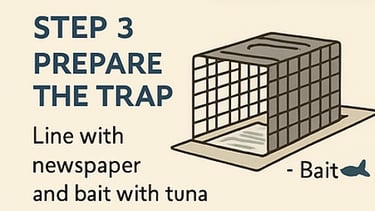
Step 4: Set the Trap and Step Back
Once baited, carefully set the trap's trigger mechanism and cover it with a towel, leaving the opening visible. Then walk away and watch from a distance.
Do not stay too close. Cats may be suspicious if they sense someone nearby. Observe from a car, window, or hidden area.
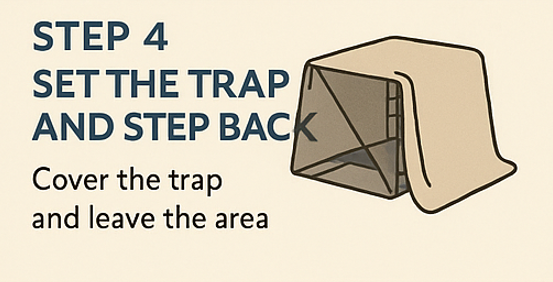

Step 5: Monitor Constantly
Traps should never be left unattended for long. As soon as a cat is caught:
Cover the entire trap with a towel to calm the cat.
Move the trap to a secure, quiet area.
Double-check the lock to ensure the cat cannot escape.
If you're trapping multiple cats, label each trap and keep track of who’s who.
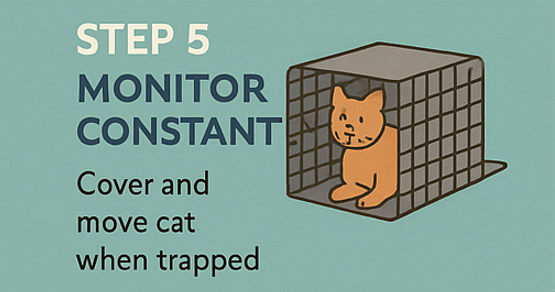

Step 6: Holding and Transport
Keep the trapped cat in a climate-controlled location, such as a garage or bathroom. Do not attempt to open the trap. Provide food only if the cat won’t be undergoing surgery within the next 12 hours.
Line the floor with newspaper or pee pads to absorb waste. Cover the trap at all times to reduce stress.
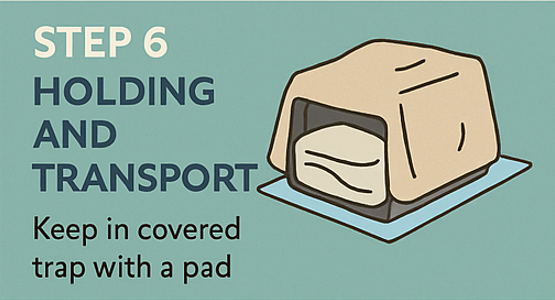

Step 7: Veterinary Visit
Take the cat to the vet for:
Spaying/neutering
Vaccinations (especially rabies and FVRCP)
Ear-tipping (a universal sign the cat has been altered)
Health check for any obvious illnesses or injuries
Some clinics also offer flea treatments or microchipping as part of the TNR package.
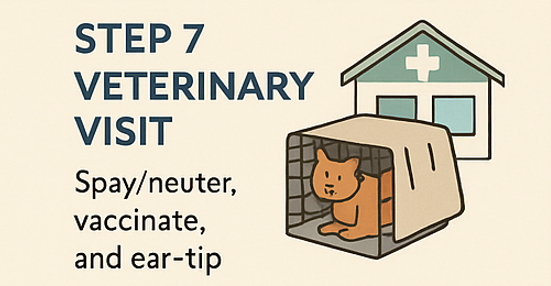

Step 8: Recovery
After surgery, cats need 24–48 hours to recover in a clean, dry, and secure space. Males can usually be released after 24 hours, while females may need up to 48 hours.
Watch for signs of complications:
Heavy bleeding
Vomiting
Lethargy
Lack of appetite
If you notice any issues, contact the vet immediately.
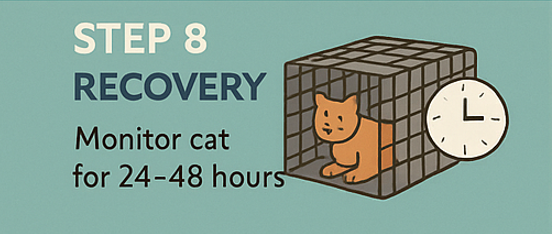

Step 9: Release the Cat
Once recovered, return the cat to the exact location where it was trapped. Release them at dusk or early morning for best results.
Gently open the trap door and step back. Never force the cat out—allow it to exit on its own.


Tips for Successful and Safe Trapping
Trap one cat per trap—never try to catch multiple cats at once.
Avoid trapping in extreme heat or cold unless absolutely necessary.
Always cover the trap once a cat is inside to reduce stress.
Work with experienced trappers or local rescue groups when possible.
What to Do After the Trapping
Once cats are released:
Resume feeding on a regular schedule
Provide fresh water and shelter
Monitor for any signs of illness or injury
Maintain a colony log to keep track of who’s been fixed
A stable, cared-for colony will be healthier, quieter, and less likely to expand uncontrollably.
Final Thoughts
Humane cat trapping is not just about catching cats—it’s about giving them a healthier, safer life. Whether you're helping one cat or managing a colony, your efforts contribute to a larger goal: ending the cycle of homelessness and suffering among community cats.
By following this safe and humane trapping guide, you’ll not only ensure the well-being of the cats but also foster a more compassionate and responsible community.
CATT COUNTY CAT NIPPERS
Subscribe to our website
Contact us :
Quick links :
Contact Us
© 2025 CATT COUNTY CAT NIPPERS All rights reserved.
